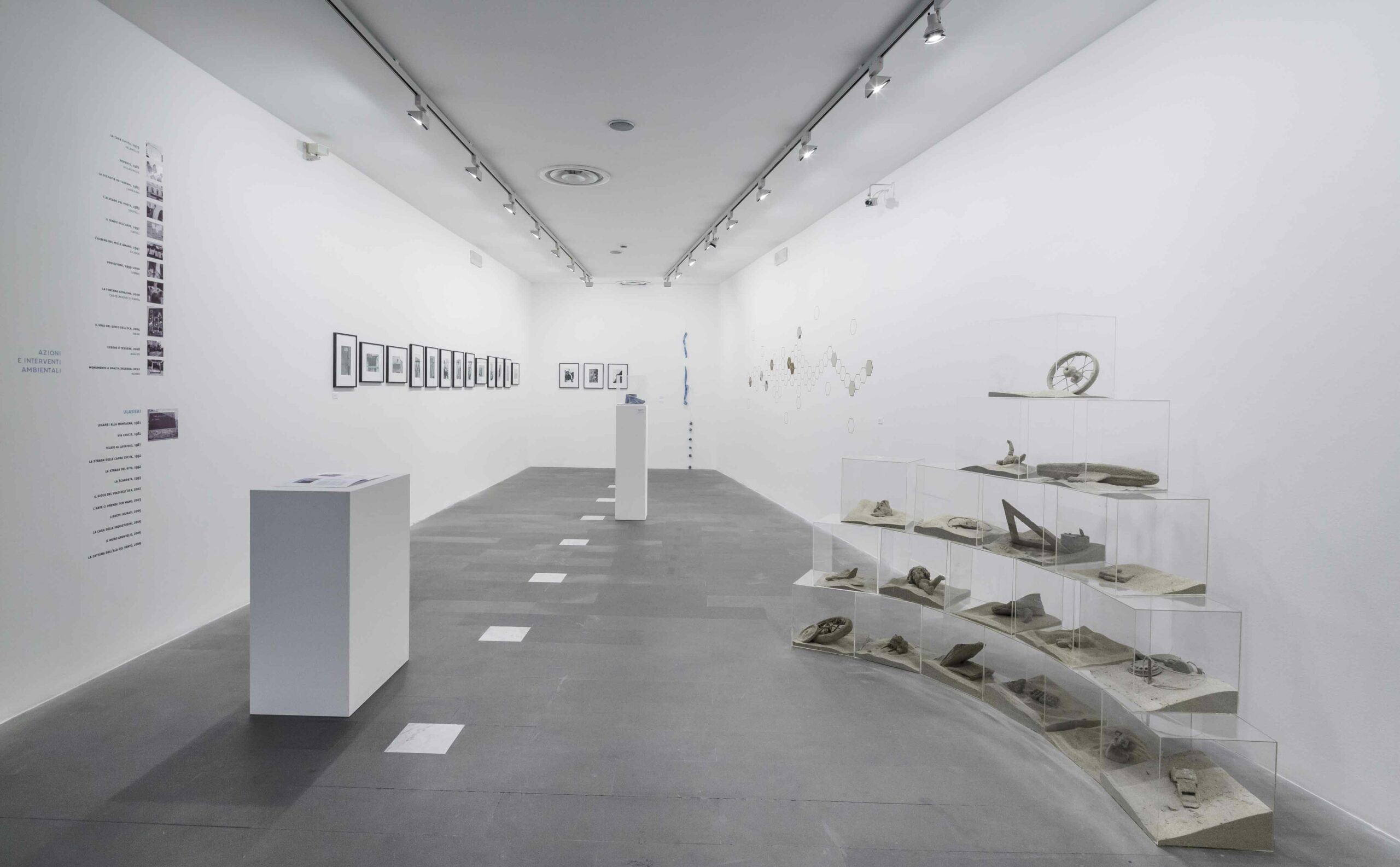The exhibition, created thanks to the contribution of the Banco di Sardegna Foundation, offers a chronological and thematic itinerary structured in three different locations: the Palazzo di Città in Cagliari, the MAN Museum in Nuoro, the town of Ulassai. With more than three hundred works from both public and private collections, as well as from the family collection, Mend the world it is the first complete retrospective dedicated to the artist.
The section of Mend the world hosted by MAN, curated by Barbara Casavecchia and Lorenzo Giusti, focuses on the most mature phase of Maria Lai’s production, from the 1980s until her death, analyzing the dense web of relationships that the artist weaves with the world outside her own study.
While he continues to create the cycles (shown here) of Frames, Sheets , Sewn books , to which are added the cosmic visions of Geographies , Lai involves the public in reflecting on the liberating potential of art through site-specific public works, collective actions, performances, theatrical writings.
The itinerary opens on the third floor with the work that acts as an intersection between the offices of Cagliari, Nuoro and Ulassai: the action Bonding to the mountain(1981), represented here by a fragment of the original tape, from the installation with which Maria Lai wanted to summarize that experience on the occasion of her previous solo show at MAN (As if for fun, 2002) and from a series of famous black and white documentary photos taken by Piero Berengo Gardin, on which Lai intervened by coloring the ribbon in each image light blue. Through unpublished documentary materials, photos, videos and some of the works produced by the artist on various occasions, the exhibition documents all of Lai’s environmental interventions and actions, from Exhibit(Villasimius, 1982), The defeat of the monitor lizards (Camerino, 1983), The poet’s hive(Orotelli, 1983) up to The bitter honey tree (Siliqua, 1997), whose sheets spread and woven with words accompany the visitor from the entrance. We see Lai supervise the creation of masks, headdresses, poems, or invite children to roll old toys in sand to make sculptures. The “thread” stretched by Lai to the public passes through the story: for example, of an ancient story like that of Maria Pietra – to which a special thematic section is dedicated – the protagonist of the story My heart by Salvatore Cambosu, Lai’s master, who becomes the archetype of the saving magic of art. Literature and, above all, poetry, the rhythmic alternation of words and silences, full and empty spaces, orality and writing, is the reservoir from which Lai draws to communicate. Other channels through which Lai “calls the other to see a part of himself” are the theater and staging: to tell it here, the original scores sung by the soprano Ille Strazza, scenography by the Fueddu and Gestu Company, the headdresses worn to the public during a performance at the Tommaseo Gallery in Trieste (1986).
The link with the childhood universe (understood as a “place of the soul”) and pedagogy is one of the richest and most vital elements of this period, which leads Lai to create sewn fairy tales and books (Holding hands with the sun , 1984; Holding the shadow by the hand , 1987; The distracted god, 1994; Curious, 2002), games (The flight of the Goose Game, 2002), decks of cards (The places of art at your fingertips, ), calligrams, workshops (Signs and dreams, 1991, which from Cagliari takes her to the Atelier des Enfants of the Center Pompidou in Paris) theater-school experiments in Alessandria, Prato, Mira (VE), Cagliari, whose paths intertwine fruitfully in the artist’s work.
At MAN, Like Little Worker Bees I (Nuoro), the four-handed work by Claudia Losi and Antonio Marras, pays an affectionate homage to Maria Lai through a weaving of metal threads that starts from the outside of the museum and crosses its walls and windows in a zigzag pattern, until it “binds” the walls a myriad of intimate objects (greeting cards, jewellery, fabrics, embroidery), created by Lai during his life and donated to friends, relatives and associates. It thus underlines her role as an active artist in her community, who generously shares and “disperses” her work, in private and in public.

